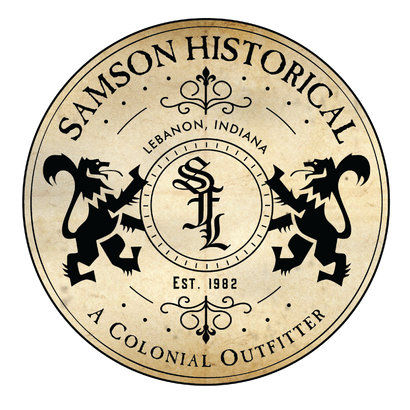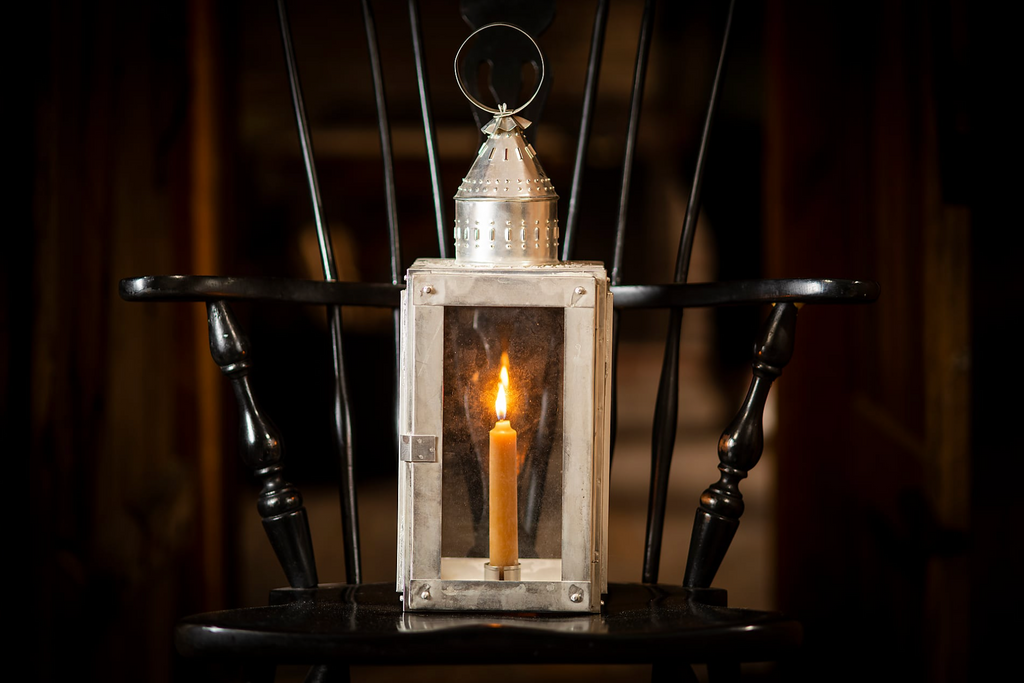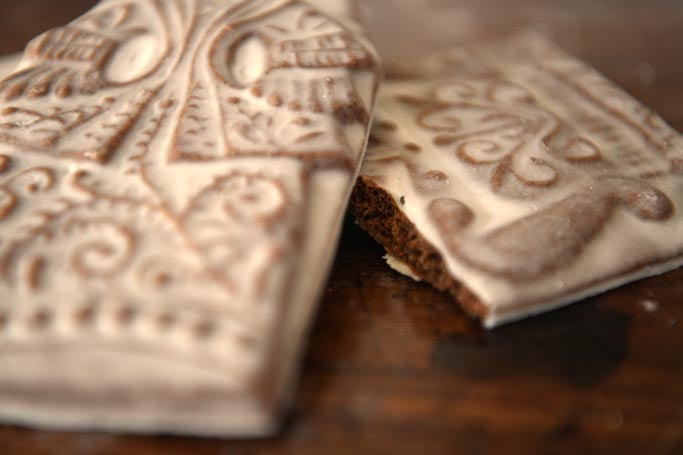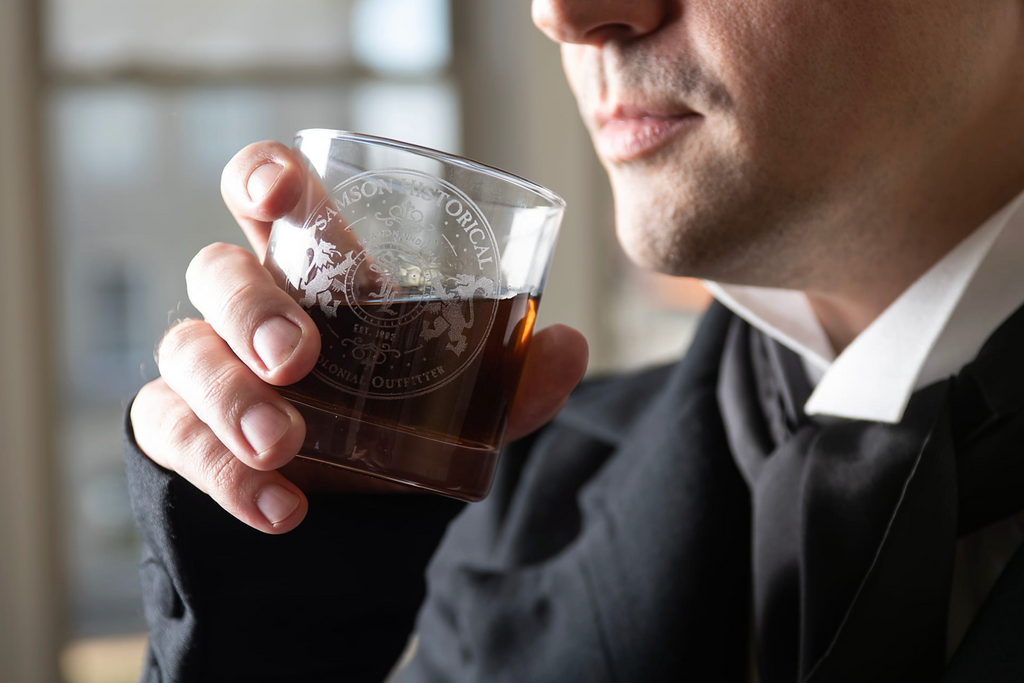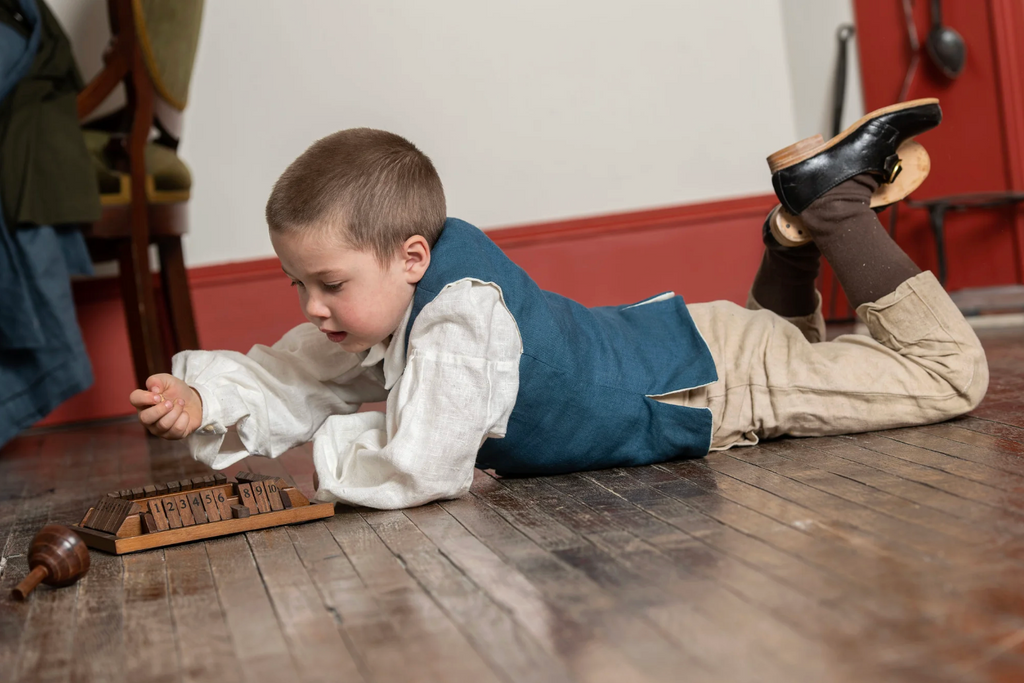Men’s Clothing
Women’s Clothing
Children's Clothing
Drinking Chocolate
by Hannah McIntire 6 min read

by Juliet Clare Warren
Today we often associate a cup of hot chocolate with a day of fun out in the snow - a sweet way to end an afternoon of sledding down hills, throwing snowballs, and building snow forts. Back indoors, we curl up on the sofa under a blanket, hands clasped around a mug of hot chocolate. Do you ever wonder whether our forefathers enjoyed hot chocolate on a cold winter’s day, too? It turns out chocolate has been enjoyed in this country from its beginning and around for the world for millennia, the recipe carefully refined over the centuries with its varied uses.
First, some context for hot chocolate’s arrival in America. Cacao trees were first cultivated between 3,000 and 4,000 years ago by the Olmec, in southern Mexico. They collected the beans when ripe, removed the husks, ground the cacao nibs into a paste, and mixed it with water. The drink was flavored with flowers and spices -- seasoned or sweetened with ingredients such as chili pepper and vanilla with honey -- and poured back and forth between vessels until it was frothy and ready to drink. The Olmec called this drink “xocolātl.” It was believed to have mystical properties, and to provide energy and long-lasting sustenance; xocolātl was reserved for medicinal and ceremonial purposes. The “recipe” was passed down from the Olmec to the Maya and finally to the Aztecs.
Hernan Cortes, one of the most famous Spanish conquistadors, brought the drink to Europe in the mid-1500s. It did not, however, become a popular staple of colonial life by way of England, as might be assumed. By the early 1700s, ports in New York, Boston, Philadelphia, and Newport were receiving large cocoa bean shipments directly from plantations in the West Indies and the Caribbean. Since these were the main ports of delivery and engaged in much of the cocoa trade, many of America’s chocolate makers were located in these four cities, eventually including New Haven, Connecticut. About 81 percent of cocoa brought to New England was from non-British sources, with the south receiving its shipments from the north. Boston was the largest chocolate making city in the colonies, followed by Philadelphia. Chocolate sold in America was almost exclusively manufactured there. Only a small percentage came directly from Europe.
In Europe, chocolate was originally a drink for the rich and royals alike. However, since its point of origin was much closer to the colonies than Europe, and Caribbean sugar was relatively inexpensive, and there were no exclusive manufacturing agreements unlike in Europe, North American producers were able to keep costs down, making the drink available for people from all walks of life. For context, in pre-Revolutionary Williamsburg, chocolate imported from New England sold for 2 shillings and 6 pence per pound. Coffee, by contrast, was less expensive at 1 shilling and 6 pence. Tea was much more expensive than both, at about 12 to 15 shillings per pound. This, however, meant that the quality of the chocolate was reflective of the cost.
American chocolate manufacturing was open to anyone who wished to participate. There were no patents on chocolate, nor monopolies that could edge people out. If you could afford the equipment used to shell cocoa beans, you could enter the trade. Baker’s chocolate was one of the biggest producers of chocolate in America then and continues to be a major supplier to the U.S. market today. In fact, many chocolate makers in the 1700s advertised in Benjamin Franklin’s Pennsylvania Gazette.
Chocolate manufacturing was done through a variety of means, depending on finances --
from foot-powered mills, which could produce small quantities of cocoa, to water mills, which could produce thousands of pounds a day. The work involved in producing cocoa was tedious and included roasting and shelling hundreds of pounds of cocoa, and running the mills whether by walking, horse power, or water. On top of the long days needed to produce cocoa, production could only occur in late fall, winter, and early spring, as the summer heat prevented the chocolate from hardening.
As a staple of daily life, the drinking of chocolate became a public and private affair. One of the earliest records of houses serving drinks containing chocolate or coffee was in 1670, in New England. By the end of the 17th century, chocolate and coffee houses became more widespread, often catering to lawyers, tradespeople and financiers; a pot of hot chocolate could be enjoyed while discussing matters of business. In the comfort of one’s own home, people might have a cup of chocolate in bed upon waking up in the morning. However, some simply wanted the stimulant effects of cocoa, so they would steep the cocoa shells in hot water. It produced a taste similar to the bitterness of coffee. For this reason, chocolate makers advertised the sale of cocoa shells alongside the cocoa itself. George Washington’s wife, Martha, was said to enjoy mixing her cocoa beans with hot water for breakfast.
Chocolate pots used for serving hot chocolate were usually imported from Europe. They were made mostly of silver or porcelain, tall and slender with a hole in the top for a molinet, which was used for whipping the chocolate into a froth. A molinet was a long handle with paddles on the end that vaguely resemble a fan. The handle went through the lid of the pot and was turned, raised, and lowered to add air into the mixture and create a nicely blended drink with a lasting froth. For the less affluent, hot chocolate was enjoyed out of a simple metal, copper or ceramic chocolate pot. These ranged from silver to porcelain style with a wooden handle fixed to the lower portion of the body by three brass rivets.

With the addition of milk to hot chocolate in the late 17th century, the molinet became even more important, as it was easier to make hot chocolate frothier. This distinguished the design of a chocolate pot from a coffee pot, which was similarly slender but did not usually have a wooden handle affixed to the side.
The recipe of drinking chocolate has changed in several ways since the Olmec’s creation. In mid-17th century England, the recipe called for sugar, red pepper, almonds, nuts, cloves, aniseed, orange flower water, and cocoa. By the time hot chocolate reached the United States, the recipe had changed again. As it became popular among colonists, hot chocolate consisted of grated chocolate and sugar mixed into a cup of hot milk, water, or brandy. For more flavor, chili, vanilla, and all-spice were added.
Not only was hot chocolate a delicious addition to the colonial diet, it also was advertised as having healing properties and could be purchased in apothecary shops. It was said to aid digestion and promote longevity, cure lung ailments, and suppress coughs. During the American Revolution, medics believed hot chocolate accelerated the rate at which soldiers could recover from wounds, illness, or exhaustion. It was supplied as an easily transportable food that provided high energy. Each soldier was given a ration of chocolate in their packs to make hot chocolate for themselves.
Chocolate was especially valued in colonial America because of its “wholesome” nature. In Protestant, Quaker, and Jewish communities across the land, chocolate was nonalcoholic, stimulating, provided nourishment and appreciated for its healing properties.
In a letter to John Adams in 1785, Thomas Jefferson predicted that someday hot chocolate would overtake the consumption of coffee and tea in America. While that didn’t happen, it was, and still is, a delicious drink in popular demand.
To make your own version of colonial-style hot chocolate, follow this recipe:
Ingredients:
- 4 squares unsweetened baking chocolate, cut into quarters
- ½ teaspoon of cinnamon
- ⅛ teaspoon of cayenne pepper
- ¼ teaspoon of ground ginger
- 3 to 4 teaspoons sugar
- 2 cups boiling water
- 2 cups boiling whole milk
- ½ teaspoon vanilla extract
Instructions:
Use a food processor to grind the baking chocolate. Chop until the chocolate is broken down into fine grains.
Place the chocolate in a large saucepan on top of the stove. Add the cayenne, cinnamon, ginger, and sugar. Pour the boiling water over the ground chocolate mix and whisk to dissolve. Add milk and vanilla. Whisk again over low heat. Whisk further for a frothier consistency. Pour into a mug and enjoy.
- Recipe courtesy American Food Roots
18th Century Recipes are best enjoyed from 18th Century Pottery! Find a mug to enjoy your drinking chocolate from.
Leave a comment
Subscribe
Sign up to get the latest on sales, new releases and more …
